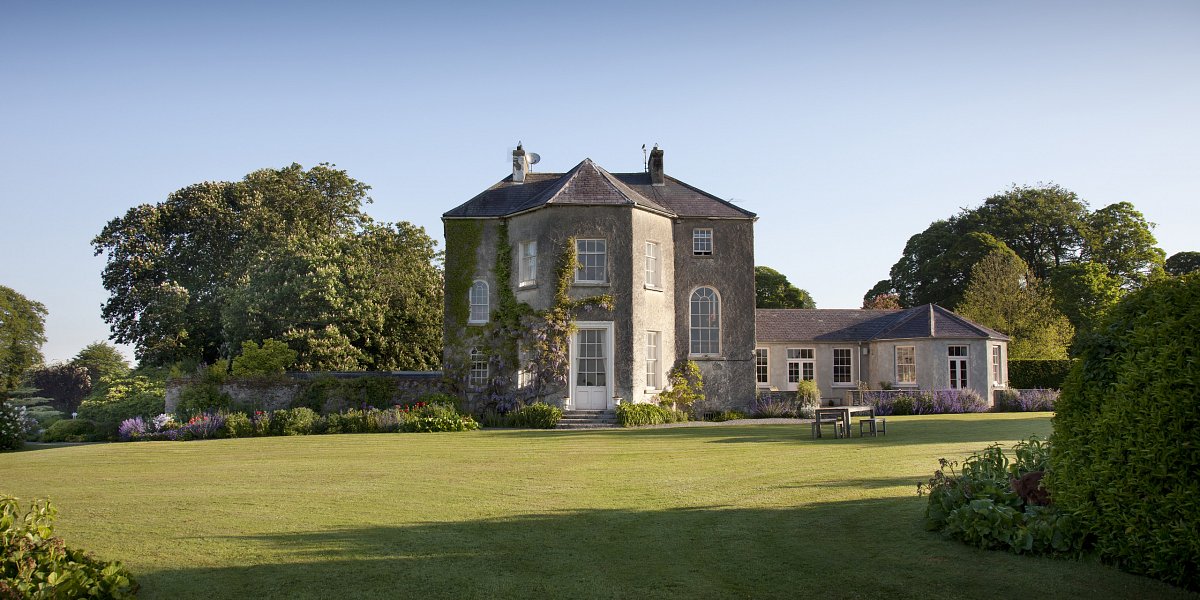Historic Houses of Ireland - From Surviving to Thriving
Anyone familiar with Irish hospitality will understand the key role played by our historic houses, many of which are famous members of associations such as Ireland’s Blue Book and Hidden Ireland, or vistor attractions in their own right (Castle Leslie, Enniscoe House, Bantry House, Glin Castle, Lismore Castle…) while others, although less well known, are equally special - and they all share many of the same challenges. Seeking ‘Practical Insights for a Vibrant Future in Irish Tourism for Privately-owned Historic Houses’, the Historic Houses of Ireland members got together with a wide range of tourism experts at Co Kildare’s lovely Burtown House & Gardens (below) recently, to work out ways to make the leap from surviving to thriving.
There was plenty of food for thought, says food writer Kate Ryan, who was a contributor at the event – and, as an outsider to the world of historic houses, finds the idea of ‘slow sustainability’ especially fascinating.

On a bright, crisp October morning, a gathering from across Ireland assembled in among the autumn garden colours of Burtown House for the inaugural Historic Houses of Ireland (HHI) Autumn School.
Held in response to ongoing feedback from HHI’s 200 members, the autumn school was an opportunity to bring in experts and expertise to discuss issues and topics of concern and interest. The autumn school was open to everyone, with members and non-members from the heritage sector all here to learn, exchange ideas and information, create new connections and network.
The inaugural event chose as its topic a focus on historic house tourism. Six panel discussions in two sessions covered topics such as event curation, biodiversity and sustainable tourism, public land access, hospitality in the 21st century, food and drink tourism, and strengthening ties with historic houses and their immediate communities.
Over 100 delegates from many different sectors of the heritage industry assembled to hear from historic house owners, event and festival programmers, historic houses operating in the food and drink space, journalists and food writers, learning and development specialists, OPW, Heritage Council, bespoke tour operators, insurance specialists, biodiversity and sustainability specialists, and chefs.
Speakers inspired conversation and questions from among the audience, and a delicious buffet lunch featuring produce from Burtown House’s own organic kitchen gardens provided plenty of opportunity to network and share ideas. Owners took what was relevant to them, their house and business, using it to spark ideas for creating positive opportunities and proactive change.
The word sustainability gets bandied about a lot and can mean many things to many people. A recurrent theme throughout the autumn school discussion was sustainable change – or rather, change that suits you and your property. It’s a refreshing stance that doesn’t demand headline grabbing Big Bang Impacts but is about incremental slow change that can only truly come with the kind of deep knowledge of house, land, history and heritage of our historic houses.
Ireland’s historic houses are custodians of our shared built heritage, but they are also custodians of natural heritage. One point everyone could find a shared middle ground on is that preserving and improving the biodiversity and natural habitats of the lands around these great houses is not only vital for sustainability, but an increasingly important facet of heritage tourism.
As Richard Tyrone said in the panel discussion “From Ideas to Events”, historic houses can think in much longer terms than traditional business planning: a 50–100-year plan is more typical than a five-year plan, he said. With that different mindset comes the idea of slow sustainability which enables decision-making and implementation to thrive within a long-term view with permanent and lasting impact, rather than the goal of short-term gain.
As an outsider to the world of historic houses and the challenges that surround their conservation and survival, it was interesting to hear myriad concerns (the perennial issue of insurance, for example, or how to open up lands and houses in a way that is welcoming and protects the fragility of material heritage) juxtaposed to a general and positive willingness to make changes and find ways to share these houses with ever more people.
It's vital, one panellist remarked, that the old and long-standing perception of the “Big House” be kept at arm’s length and to focus more on the active role historic houses can have in welcoming people. Ireland’s Historic Houses receives funding annually from the Heritage Council which in exchange encourages houses to engage with Heritage Week. In HHI’s 2024 annual report, 70 member houses opened their doors to visitors during Heritage Week 2024 – twenty more than the previous year, and the appetite for participation is growing.
This was a positive event that provided plenty food for thought for all who attended and participated. The good news is the autumn school will return in 2025 with initial plans for an extended 2-day event with an equally extended programme, too.
To find out more about the Historic Houses of Ireland, visit www.ihh.ie
Kate Ryan, Flavour.ie







There are currently no comments
Leave a comment
Not a member? Register for your free membership now!
Or leave a comment by logging in with: